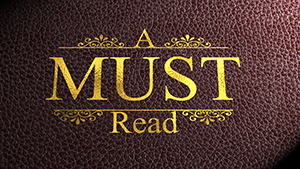C. S. Lewis’ “Prince Caspian”
 Over the past week I finally got the chance to continue my Narnia series, so this week I’m going to review book three: Prince Caspian. While not a turning point in structure, Prince Caspian is an interesting change of pace for C. S. Lewis, as it deals with many of the themes that have become so popular today: namely, political intrigue. While not nearly as intricate in relations as A Song of Ice and Fire, this is the first time we really see some of the power struggles raging in Narnia beyond the ambitions of the White Witch. In Prince Capsian, the Pevensies are back home in England after ruling for years in Narnia. After spending a year in their regular lives, they magically find themselves inexplicably swept away to Narnia once again, though they are startled to find that hundreds of years have passed since their departure. A new race of men, the Telmarines, led by the tyrant King Miraz, have seized the land and driven the creatures of the realm underground. The original Narnians back the young Prince Caspian, nephew of the fratricidal usurper Miraz, as the rightful ruler of the land. Naturally, the Pevensies become involved in the rebellion, and have to find a way to restore Narnia to its former majesty.
Over the past week I finally got the chance to continue my Narnia series, so this week I’m going to review book three: Prince Caspian. While not a turning point in structure, Prince Caspian is an interesting change of pace for C. S. Lewis, as it deals with many of the themes that have become so popular today: namely, political intrigue. While not nearly as intricate in relations as A Song of Ice and Fire, this is the first time we really see some of the power struggles raging in Narnia beyond the ambitions of the White Witch. In Prince Capsian, the Pevensies are back home in England after ruling for years in Narnia. After spending a year in their regular lives, they magically find themselves inexplicably swept away to Narnia once again, though they are startled to find that hundreds of years have passed since their departure. A new race of men, the Telmarines, led by the tyrant King Miraz, have seized the land and driven the creatures of the realm underground. The original Narnians back the young Prince Caspian, nephew of the fratricidal usurper Miraz, as the rightful ruler of the land. Naturally, the Pevensies become involved in the rebellion, and have to find a way to restore Narnia to its former majesty.
Prince Caspian is one of my favorite Narnia books, second only to The Magician’s Nephew. Like I said above, this is the point where some darker elements of political intrigue, betrayal, and oppression enter the series. The Telmarines are far more interesting enemies, at least by this point in the series, than the exceedingly simple White Witch. That being said, the character development in this entry is questionable, in my opinion. While many people seem to love how the Pevensies retain some semblance of childishness, the notion makes little sense to me. These “children” are, in reality, very old. While they seem to display maturity in some scenes, especially Peter, much of their interaction with Narnians shows that they need a great deal of guidance – “leading the children” as it were, despite the fact they are remembered as past kings and queens of Narnia. Lewis, while fantastic at creating characters and worlds, doesn’t excel in the villains department. The Telmarines are a fun deviation from the “legions of evil” aspect, but the actual villains like King Miraz remain archetypal. The advantage to this adherence to archetypes is that the characters are ironically memorable for their strengths, if not their complexity. Narnia, on the other hand, is as beautifully fleshed-out as anyone would expect form Lewis. The history of the world is meticulously detailed and meshes beautifully with past and future books. To top it off, the sense of brooding war throughout the novel scores Prince Caspian points over The Lion, The Witch, and The Wardrobe.
All-in-all, Prince Caspian is a (debatably) high point in the series thus far, particularly if you like medieval politics and war drama, keeping in mind that content will never stray too far from child-friendly. Technically speaking, Prince Caspian is on par with Lewis’ other Narnia works, though it won’t “wow” anyone who wasn’t blown away by previous entries. If you have always struggled getting through Narnia books because of how basic their stories seemed to be, give Prince Caspian a shot. The narrative has some interesting twists and turns that really kick off the march towards The Last Battle, and the difference in tone may be just what you needed to get into this classic series.











